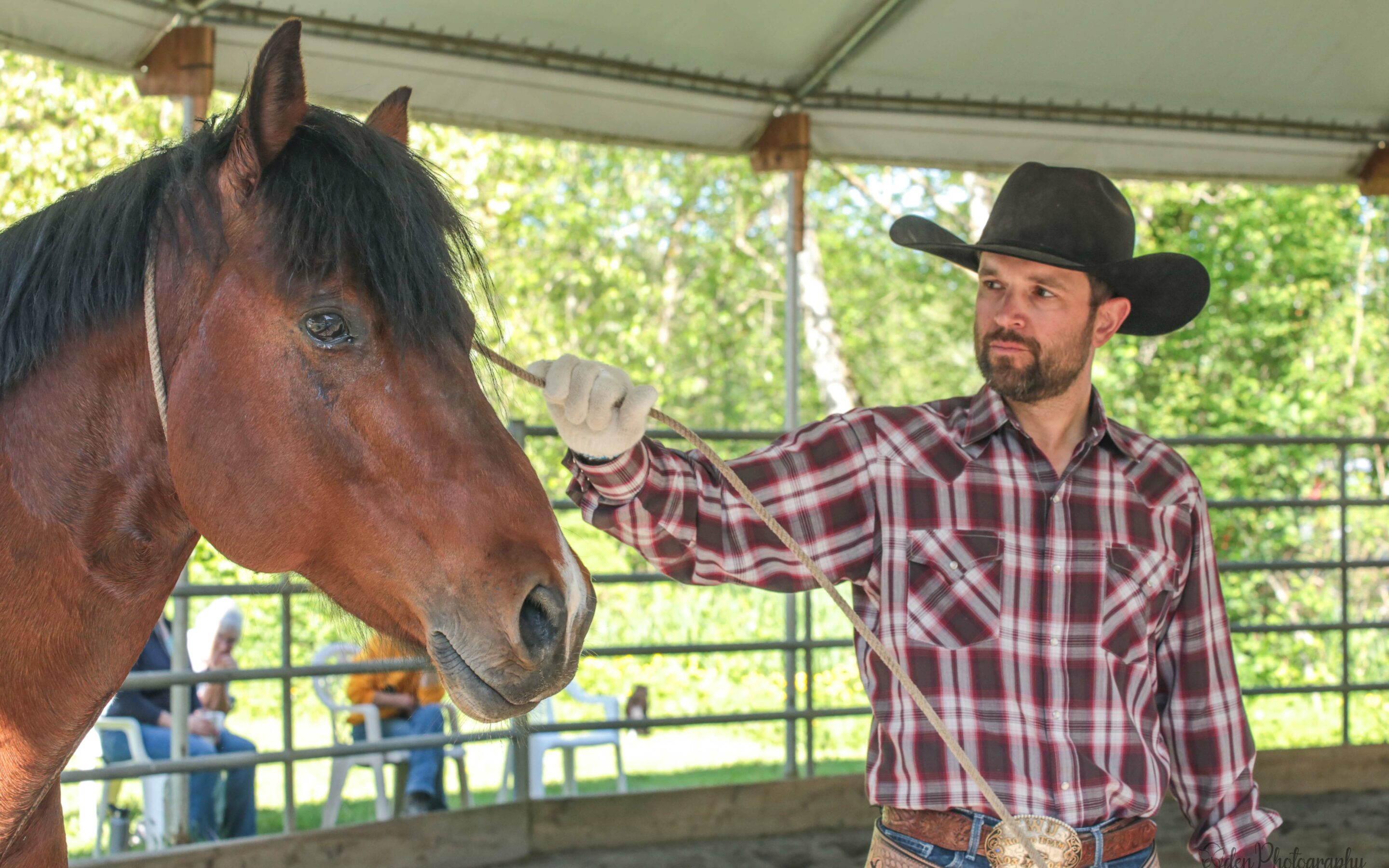Maybe it had been different at one point, but the Lancelot that arrived at SAFE was not able to be haltered. He was curious, but unwilling to be approached, and very reluctant to be touched. The first step for horses like Lance, those who need to be halter-started (or re-started), is to rope them.
Lance had a severe misunderstanding of pressure, and so his initial reaction to it was not to give, but rather the opposite — to pull back, to fight against it. When asked to turn and face the person at the end of the rope, his initial inclination was to do anything but that, including a hind-towards-you spin maneuver that could be dangerous in close range (another reason why roping is such a good idea, it allows us to keep a safe distance).
But Lance was a fast learner. His previous experiences with people were not so terribly destructive that he was set in his ways (and anyway, horses have a remarkable capacity for change, so nothing is truly ever calcified), and so it was within the first two days of working with him that Joel was able to get those first touches, and put a halter on him.
First touches with horses who may have never been touched (or most likely in this case, gone a long while without) typically include using the rope as an initial point of contact. The horse is usually a bit more accepting of an inanimate object touching them before all the energy that can accompany a hand. First pets can also involve some pantomime touches, the motion of a pet preceding the pet itself. Joel used both of these techniques with Lance.
Hindquarters is king. Teaching a horse like Lance, who is not yet halter-broke, how to un-track his hind, is crucial to his balance and future success. In between drawing him in and teaching him how to face up, the majority of the time was spend on the basics of hindquarters, frontquarters, and forward — the very basics.
Lance struggled with being driven forward, and also had a difficult time changing eyes. He wanted to keep you on his left side, and would do all manner of maneuvers in order to keep you out of his right eye. It was important to gently remind him to stay going the direction in which he was sent to prevent bad habits from happening in the future. A horse who learns he can get away with tracking in only one direction will make going that way his way of life, if allowed to do so.
In working with horses, you hope to be able to leave them at a point where they can pick back up the next day a little further along than where you started the day before. This looks different for every horse, of course. For Lance, we ended the first day with putting a halter on him, and were able to reach that same point on the second day about halfway through the session. While he wasn’t exactly falling into our arms, by the end of the second day he was a lot more willing to accept pets. Wary still, yes, but a little more understanding.
Despite being able to halter him with more ease, it was still important to keep him on the longer rope line for a while longer as he continued to learn. It was still easy for him to feel trapped in close quarters, and to prevent him from hurting someone, it was to everyone’s benefit to improve his understanding from further away before moving in.
Lance made huge changes over the course of those first two days, and thanks to a strong foundation, he has continued to make great progress. Expect to see more soon from this smart guy!


